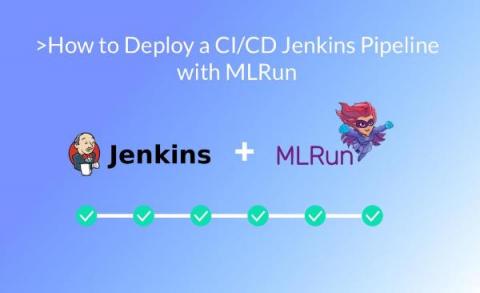Systems | Development | Analytics | API | Testing
Latest Posts
Deploying Your Hugging Face Models to Production at Scale with MLRun
How to Run Workloads on Spark Operator with Dynamic Allocation Using MLRun
Building an Automated ML Pipeline with a Feature Store Using Iguazio & Snowflake
Iguazio Product Update: Optimize Your ML Workload Costs with AWS EC2 Spot Instances
Iguazio users can now run their ML workloads on AWS EC2 Spot instances. When running ML functions, you might want to control whether to run on Spot nodes or On-Demand compute instances. When deploying Iguazio MLOps platform on AWS, running a job (e.g. model training) or deploying a serving function users are now able to choose to deploy it on AWS EC2 Spot compute instances.
From AutoML to AutoMLOps: Automated Logging & Tracking of ML
AutoML with experiment tracking enables logging and tracking results and parameters, to optimize machine learning processes. But current AutoML platforms only train models based on provided data. They lack solutions that automate the entire ML pipeline, leaving data scientists and data engineers to deal with manual operationalization efforts. In this post, we provide an open source solution for AutoMLOps, which automates engineering tasks so that your code is automatically ready for production.
How to Deploy an MLRun Project in a CI/CD Process with Jenkins Pipeline
In this article, we will walk you through steps to run a Jenkins server in docker and deploy the MLRun project using Jenkins pipeline. Before we dive into the actual set up, let’s have a brief background on the MLRun and Jenkins.
Beyond Hyped: Iguazio Named in 8 Gartner Hype Cycles for 2022
We’re so proud to share that Iguazio has been named a sample vendor in eight Gartner Hype Cycles in 2022: Iguazio was mentioned in the following categories: MLOps, Logical Feature Store, Adaptive ML, Data-Centric AI, AI Engineering, AI TRiSM, Operational AI Systems, ModelOps, AI Engineering in HCLS and Continuous Intelligence. We are delighted to have been mentioned alongside global industry leaders like AWS, IBM, Microsoft, Google, Databricks and Dataiku.
Build an AI App in Under 20 Minutes
Machine learning is more accessible than ever, with datasets available online and Jupyter notebooks providing an easy way to explore and train models. In building a model, we often forget that it will be incorporated into an application that will provide value to the user. Therefore, we wanted to demonstrate how we can "use" the models we build in an application.
Top 27 Free Healthcare Datasets for Machine Learning
Machine Learning is revolutionizing the world of healthcare. ML models can help predict patient deterioration, optimize logistics, assist with real-time surgery and even determine drug dosage. As a result, medical personnel are able to work more efficiently, serve patients better and provide higher quality healthcare.











